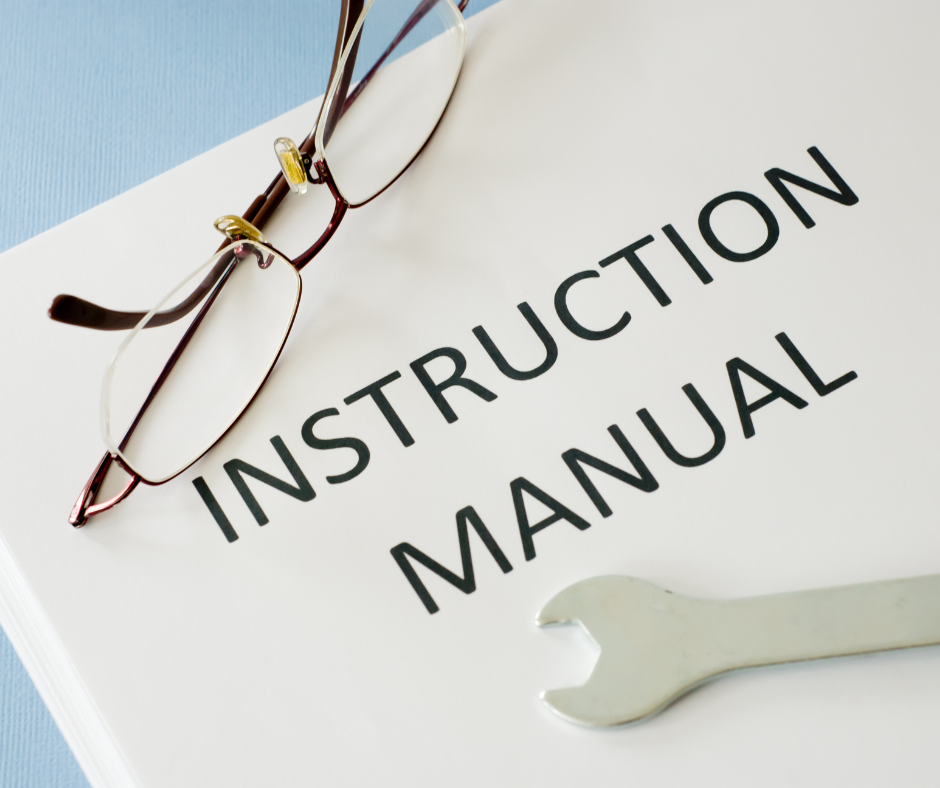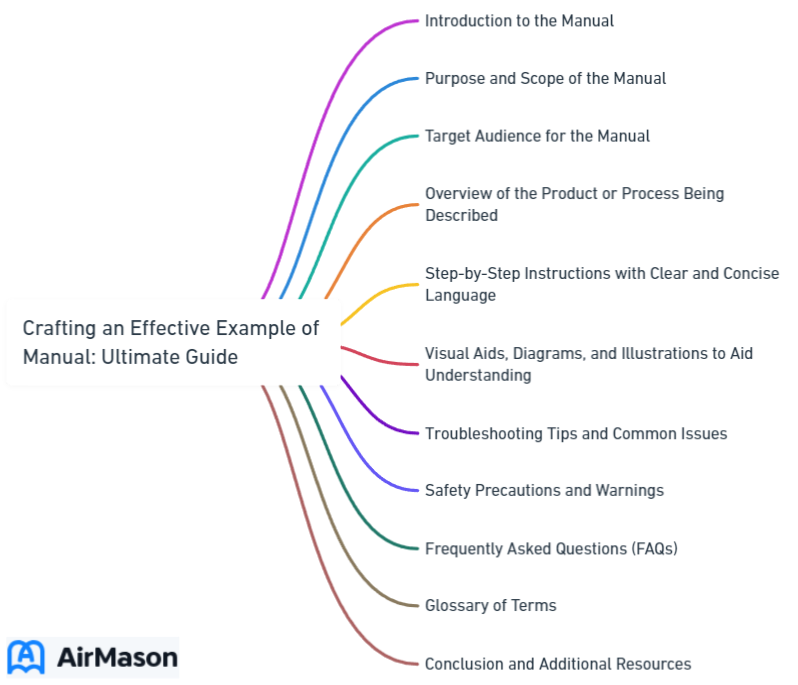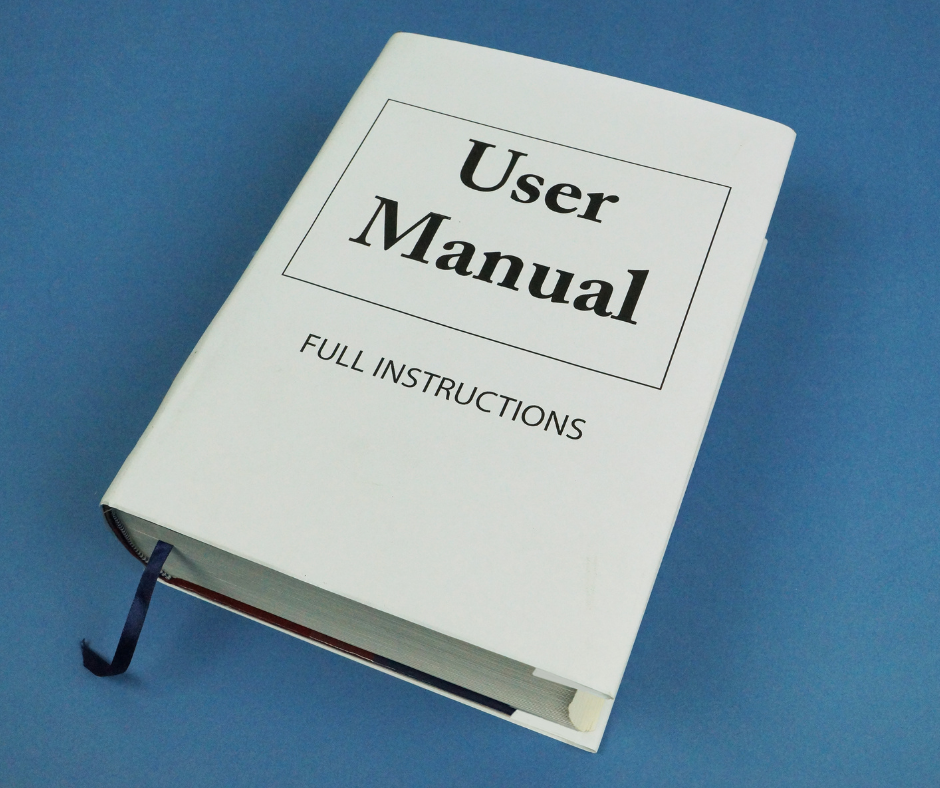
Have you ever struggled to understand a poorly written user manual? You’re not alone. A well-crafted user manual can make all the difference in user experience, empowering customers to confidently use products and services. In this blog post, we will explore different types of manuals, key components of effective manuals, and a step-by-step process for creating a user-friendly manual, ensuring accessibility and usability, and collecting user feedback for continuous improvement. As an example of manual creation, get ready to create an outstanding user manual that leaves your customers feeling supported and satisfied!
Key Takeaways
- Create an effective manual with clear language, visual aids and logical structure for a user-friendly experience.
- Obtain feedback from users to tailor your manual and provide regular updates & maintenance.
- Learn from real life examples of successful manuals to empower customers!
Understanding the Different Types of Manuals
Manuals come in various forms, each with its purpose. From user manuals to service manuals, these guides aim to help users get the most out of their products and services.
To create a comprehensive and effective guide that caters to diverse user needs, grasp the differences between these types of manuals.

User Manuals
User manuals serve as important companions for products and services, offering step-by-step instructions to help users fully utilize them. Traditionally provided as physical booklets, user manuals have evolved into electronically distributed documents, making them more accessible and easier to use. A great user manual is marked by clear language, visual aids, and a logical structure, all of which ensure ease of understanding and following the material. Utilizing a user manual template can help in achieving these qualities.
To craft an engaging user manual, follow these steps:
- Identify your target audience.
- Create an outline.
- Write clear and concise content devoid of overly technical jargon.
- Incorporate appealing visuals and formatting, such as illustrated walkthroughs and annotated screenshots.
By following these steps, you can create a user manual that is both informative and engaging.
Instruction Manuals
Instruction manuals, a form of user documentation, guide users through specific tasks or procedures, offering clear setup instructions and in-depth information on using a product optimally. A well-designed instruction manual can unlock numerous benefits, such as improved customer retention, fewer support tickets, and increased business growth, all by providing comprehensive user instructions.
Humor can make instruction manuals more engaging and memorable, while online guides enable users to search for and access the content they need with ease. Apple’s user guide, Apple Support, is a prime example of a user guide that helps users make the most of their devices.
Technical Documentation
Technical documentation delves into a product’s technical aspects, thereby empowering customers with the knowledge they need to solve their problems and maintain a long-term relationship with the company. A good technical manual should be simplified, clear, and well-structured for the best user experience.
Subject matter experts can offer invaluable insights into the product, such as common malfunctions and troubleshooting techniques, making the manual extremely useful. Visual aids, such as screenshots, diagrams, and photographs, can make technical manuals more engaging and informative.
Service Manuals
Service manuals focus on maintenance, repair, and troubleshooting, offering invaluable guidance for users when they face issues with a product. Examples of service manuals include user manuals for cars, appliances, and other pieces of equipment or machinery.
Service manuals offer clear instructions and safety precautions, aiding users in interacting safely and efficiently with the product for a seamless and enjoyable experience. Great user manuals complement service manuals, ensuring comprehensive guidance for users.
Manual Procedures
Manual procedures, often referred to as manual processes, entail tasks that are performed by individuals without the aid of automated tools or computerized systems. These procedures rely on human effort and precision to execute specific steps in a systematic manner. Whether it’s assembling products, conducting data entry, or following a set protocol for quality control, manual procedures are fundamental in various industries. While automation and technology have advanced significantly, manual procedures remain essential, especially in tasks requiring adaptability, critical thinking, or a personal touch. Despite advancements, certain processes are best suited for manual handling, ensuring a careful and nuanced approach to achieve desired outcomes and maintain high standards of quality and accuracy.
Key Components of an Effective Manual

Effective user manuals optimize user experience and understanding through common components. These include clear language, visual aids, and a logical structure, which collectively result in a comprehensive, user-friendly manual that users can navigate and understand with ease.
Copywriters can enhance the readability of their text by breaking it up into paragraphs.
Clear Language
The use of clear language in user manuals is paramount to ensure user understanding. Avoiding technical language and overly technical jargon, focusing on simple language allows the creation of a manual that caters to users with varying levels of expertise. This approach makes the manual more accessible and user-friendly, ultimately leading to a better user experience.
Good readability is essential for user manuals. Splitting the text into paragraphs is a key
Visual Aids
Visual aids, such as images, diagrams, and charts, play a vital role in enhancing comprehension and engagement in user manuals. They can help users grasp complex concepts more easily, making the manual more captivating and helpful.
For example, illustrated walkthroughs and annotated screenshots can significantly improve user understanding and engagement.
Logical Structure
A logical structure in user manuals helps users navigate the manual and find relevant information more easily. By organizing content into a clear and logical hierarchy, you can ensure that users can easily locate the information they need, making the manual more accessible and user-friendly.
Procedure Manual Examples
When seeking guidance on crafting a comprehensive procedure manual, examining existing procedure manual examples can be highly beneficial. These examples serve as practical templates, offering insights into structuring and organizing procedures effectively. A well-crafted procedure manual should outline step-by-step instructions, clarify roles and responsibilities, and provide contextual information where necessary. By studying procedure manual examples, you can understand how to strike a balance between clarity and conciseness, ensuring that crucial details are conveyed without overwhelming the reader. Additionally, analyzing various examples allows you to tailor your own procedure manual to the specific needs and nuances of your organization or project.
Creating a User-Friendly Manual: Step-by-Step Process

Creating a user-friendly manual involves a step-by-step process that ensures the manual is accessible, engaging, and informative. Here are the steps to follow:
- Identify the audience.
- Develop an outline.
- Write clear content.
- Incorporate visuals and formatting.
By following these steps, you can create a manual that meets the needs of your users and provides them with the support they need.
Identifying the audience is the first step in creating a user-friendly manual. Consider who
Identify Your Audience
The identification of your user manual’s audience is key to tailor the content and tone to their needs. Understanding your customers’ intentions and how they plan to use your product allows you to create a manual that caters to their specific requirements.
Defining the target audience allows for precision in tailoring the manual’s content and tone to the users’ level of technical expertise, thereby setting the foundation for success.
Develop an Outline
Developing an outline for your user manual ensures a logical flow of information and a solid framework for organizing the content. This approach encourages you to think through the various sections and steps of the manual, ensuring consistency and clarity.
An outline, similar to a table of contents, helps you create a successful manual by providing a clear roadmap for organizing the content and making sure the information flows logically.
Write Clear and Concise Content
Writing clear and concise content is essential to making your user manual easy to understand. By avoiding technical jargon and focusing on simple language, you can create a manual that caters to a wide range of users with different levels of expertise.
This approach makes the manual more accessible and user-friendly, ultimately leading to a better user experience.
Incorporate Visuals and Formatting
The incorporation of visuals and formatting in your user manual amplifies its overall presentation, rendering it more appealing and engaging for users. Visual aids, such as illustrations and diagrams, can help users understand complex instructions more easily, while clear formatting ensures that the manual is easy to navigate and follow.
By incorporating visuals and formatting, you can create a user manual that is both informative and visually appealing.
Ensuring Accessibility and Usability

Providing an inclusive and supportive experience for all users necessitates ensuring accessibility and usability in user manuals. By considering accessible design and inclusive language, you can create a manual that caters to a diverse audience, including users with disabilities and those with varying levels of technical expertise.
Accessible Design
Accessible design is essential for creating user manuals that cater to the needs of users with disabilities. Some ways to make user manuals more accessible include:
- Using high-contrast colors
- Using readable fonts
- Providing alternative text for images
- Ensuring proper heading structure
- Using descriptive link text
- Providing captions or transcripts for videos
By considering the needs of disabled users in the design process, user manuals can be made more accessible and easier to use for everyone, ultimately leading to a better user experience and a broader customer base.
Including accessibility features in user manuals can help to ensure that all users, regardless of their
Inclusive Language
Inclusive language is vital for creating a user-friendly experience for all readers, regardless of their background, gender, race, ethnicity, religion, or ability. By avoiding prejudiced, stereotyped, or discriminatory language, user manuals can ensure everyone feels included and respected.
Additionally, inclusive language improves the usability of a manual by enhancing readability and comprehension, making it more accessible to a diverse audience.
Collecting User Feedback and Updating Manuals

Collecting user feedback and updating manuals is an essential part of maintaining their effectiveness. By obtaining feedback from users, you can identify areas for improvement, make necessary changes, and ensure that the manual continues to meet user needs.
Regular updates and maintenance also help keep the manual current and accurate, providing users with the most up-to-date information and support.
Obtaining Feedback from Users

To ensure the effectiveness of your user manual, obtaining feedback from users is a vital step. By gathering feedback through:
- Surveys
- Interviews
- Focus groups
- User testing
You can identify areas that need improvement and make necessary changes based on user input.
This feedback ensures that your manual is tailored to meet user needs and provides them with the support they require.
Regular Updates and Maintenance
To keep your user manual current and accurate, regular updates and maintenance are indispensable. By scheduling user manual updates to align with new product features or changes, you can ensure that users always have the most up-to-date information and support.
Maintaining an accurate and up-to-date manual not only helps users but also reflects your commitment to providing excellent customer support.
Templates for Training Manuals
Templates for training manuals are essential tools for creating organized, effective, and visually appealing guides for training purposes. These templates provide a structured framework that helps instructional designers and content creators organize the training material in a logical sequence. By utilizing templates for training manuals, one can standardize the format, ensuring consistency and clarity in the presentation of information. These templates often include sections for objectives, course overview, instructional content, activities, assessments, and references. The use of pre-designed templates not only streamlines the manual creation process but also allows for customization to meet the specific needs of the training program, ultimately enhancing the overall training experience for learners.
Real-Life Examples of Effective Manuals

Looking for inspiration to create your own user-friendly and informative manual? Real-life examples of effective manuals can provide valuable insights into what makes a manual stand out. From clear language and engaging visuals to logical structure and accessible design, these examples demonstrate how a well-crafted manual can enhance user experience and empower customers.
For instance, Apple’s user guide, Apple Support, showcases an excellent user guide that helps users make the most of their devices. Sharkninja’s user manual for Ninja Foodi is another great example, offering in-depth information and helpful tips for users to get the most out of their appliance.
By learning from these examples, you can create a user manual that is both engaging and informative, leaving your customers feeling supported and satisfied.
Summary
In conclusion, creating an effective user manual is essential for providing the best possible user experience and empowering customers to confidently use products and services. By understanding the different types of manuals, incorporating key components like clear language and visual aids, and following a step-by-step process to create a user-friendly manual, you can ensure your manual meets user needs and provides them with the support they require. Remember to consider accessibility and usability, collect user feedback, and keep your manual updated to maintain its effectiveness. With these tips in mind, you’re well on your way to creating a user manual that will leave your customers feeling supported and satisfied.
Frequently Asked Questions
What are examples of manuals?
Examples of manuals include quick start guides, installation manuals, help files, checklists, online e-learning webpages, instruction videos, augmented reality instructions, and reference cards.
What are the three types of manuals?
The three types of manuals are service, user and operation manuals. Service manuals help technicians maintain and repair equipment, user manuals assist people to use a particular system or device and operation manuals provide guidance for staff to perform their functions correctly and efficiently.
What should a manual include?
A manual should include product identification info, product specifications and descriptions, usage instructions, a glossary of terms, troubleshooting info and FAQs, safety precautions, policies and terms of use, a table of contents and an index.
How do you write a good manual?
To write a good manual, create a logical structure that is easy to understand, use plain language and visuals, identify the users and focus on their needs, make sure topics and articles are clear and searchable, and provide feedback and reviews.
What is the purpose of a user manual?
A user manual provides step-by-step instructions to help users effectively utilize a product or service, giving them the confidence to handle any potential issues independently.